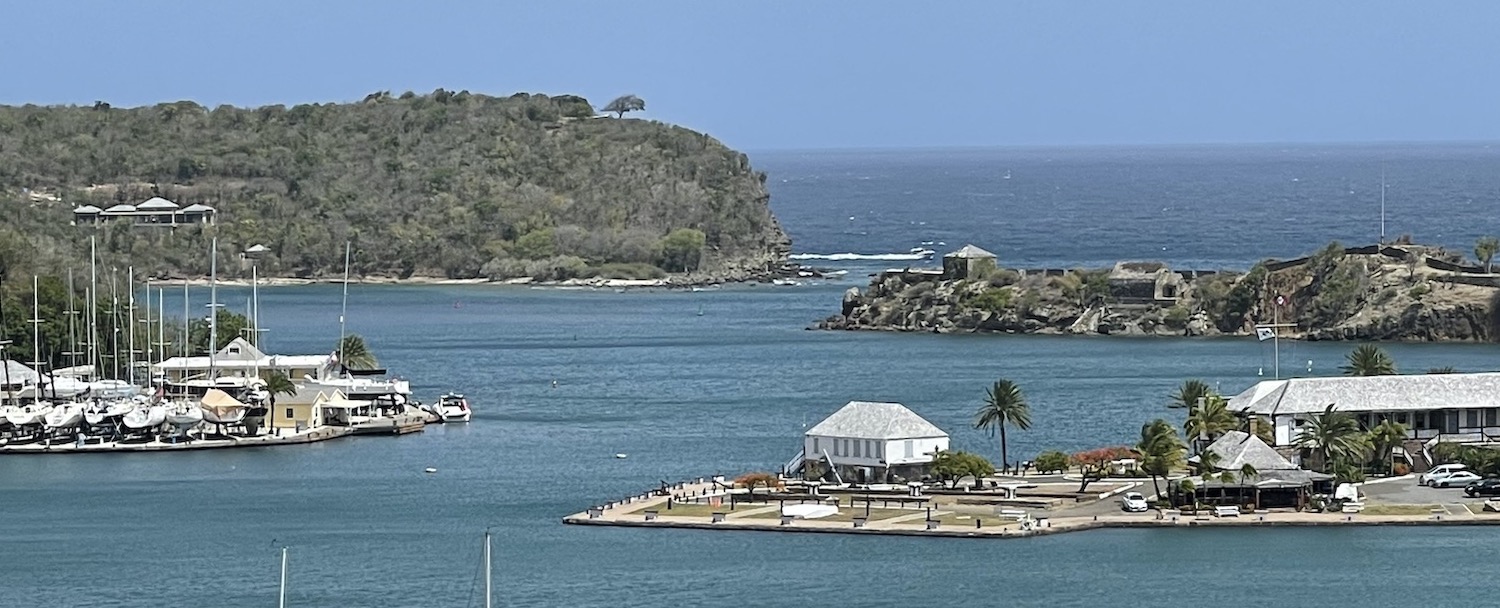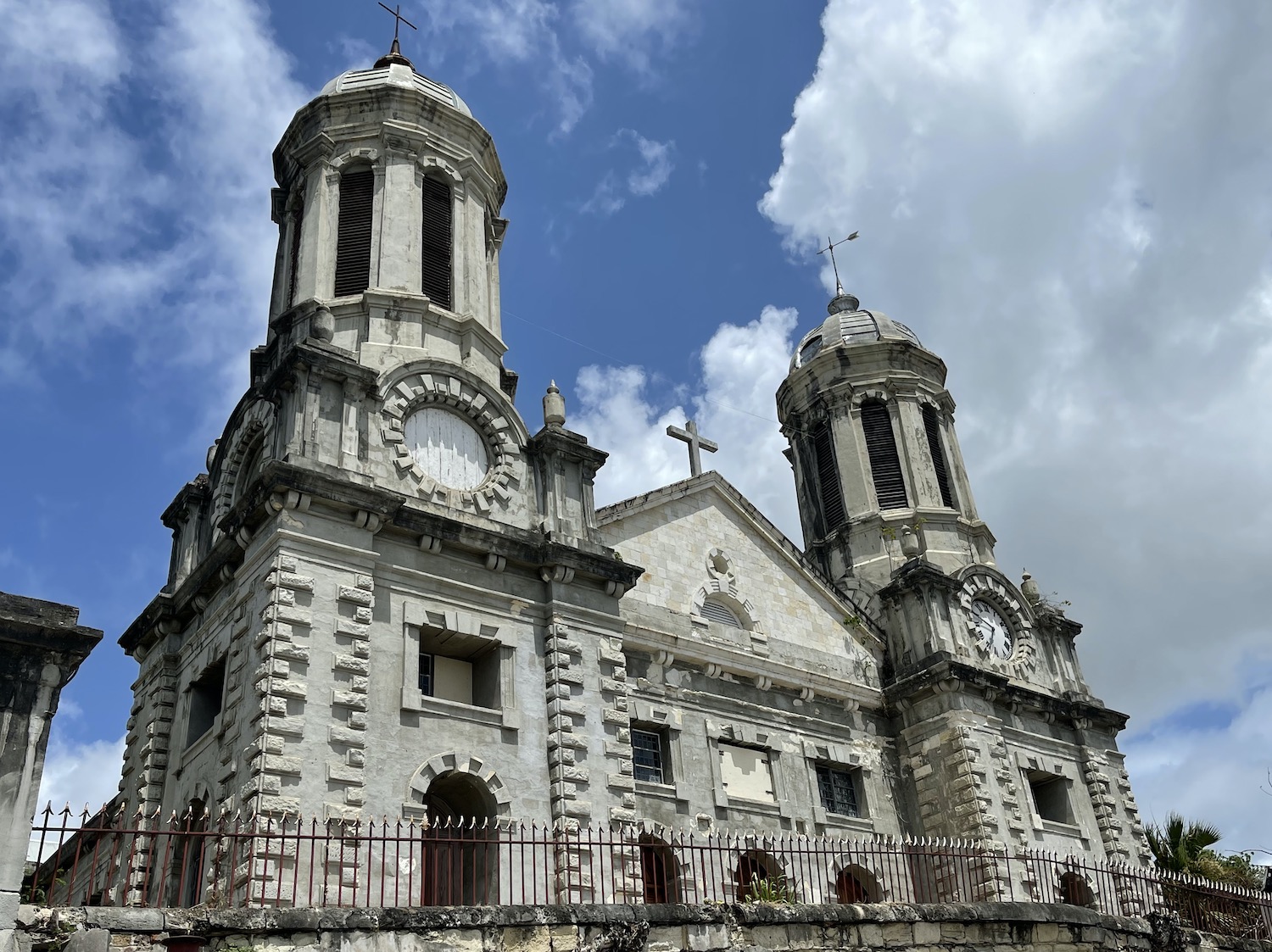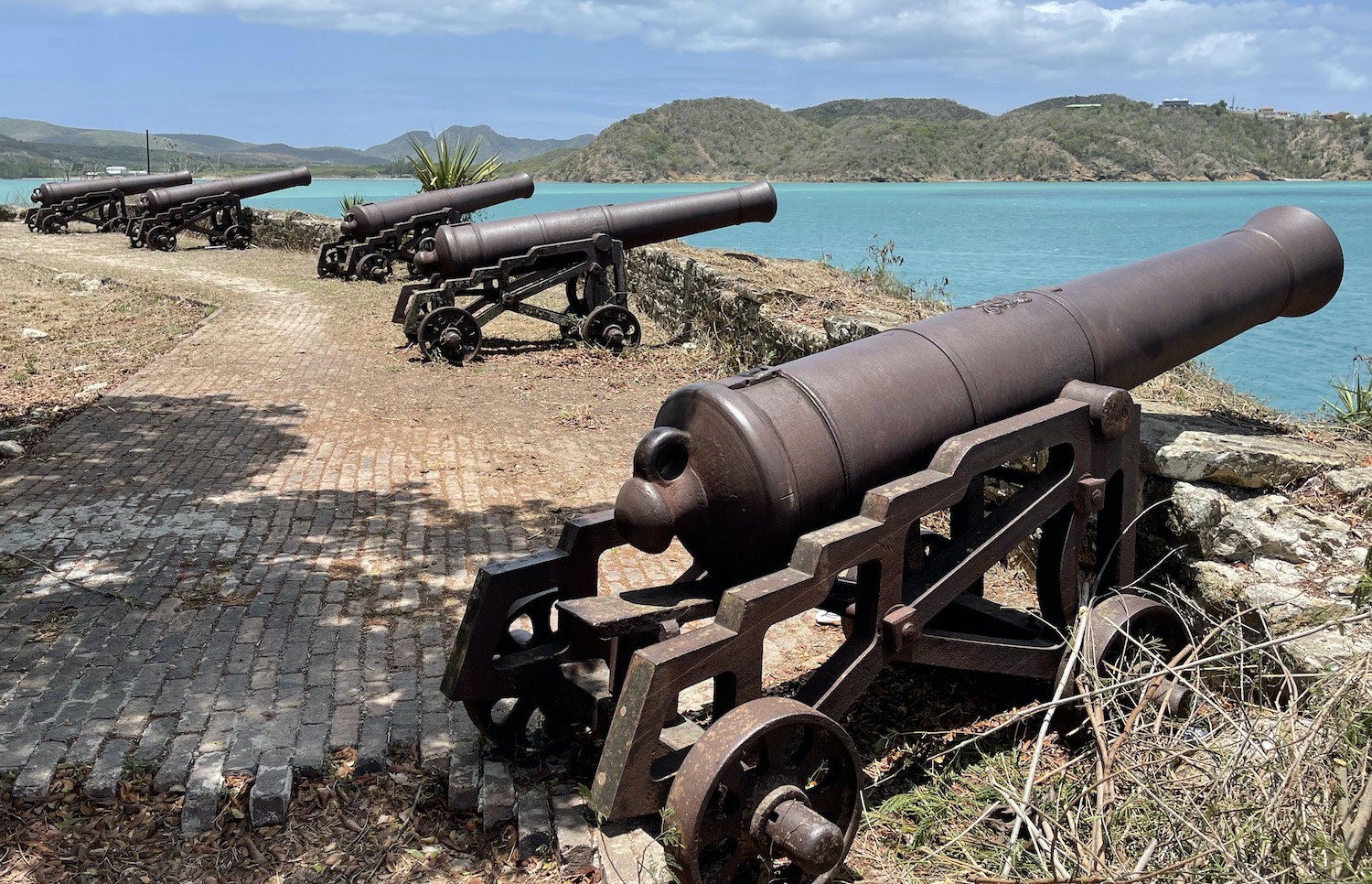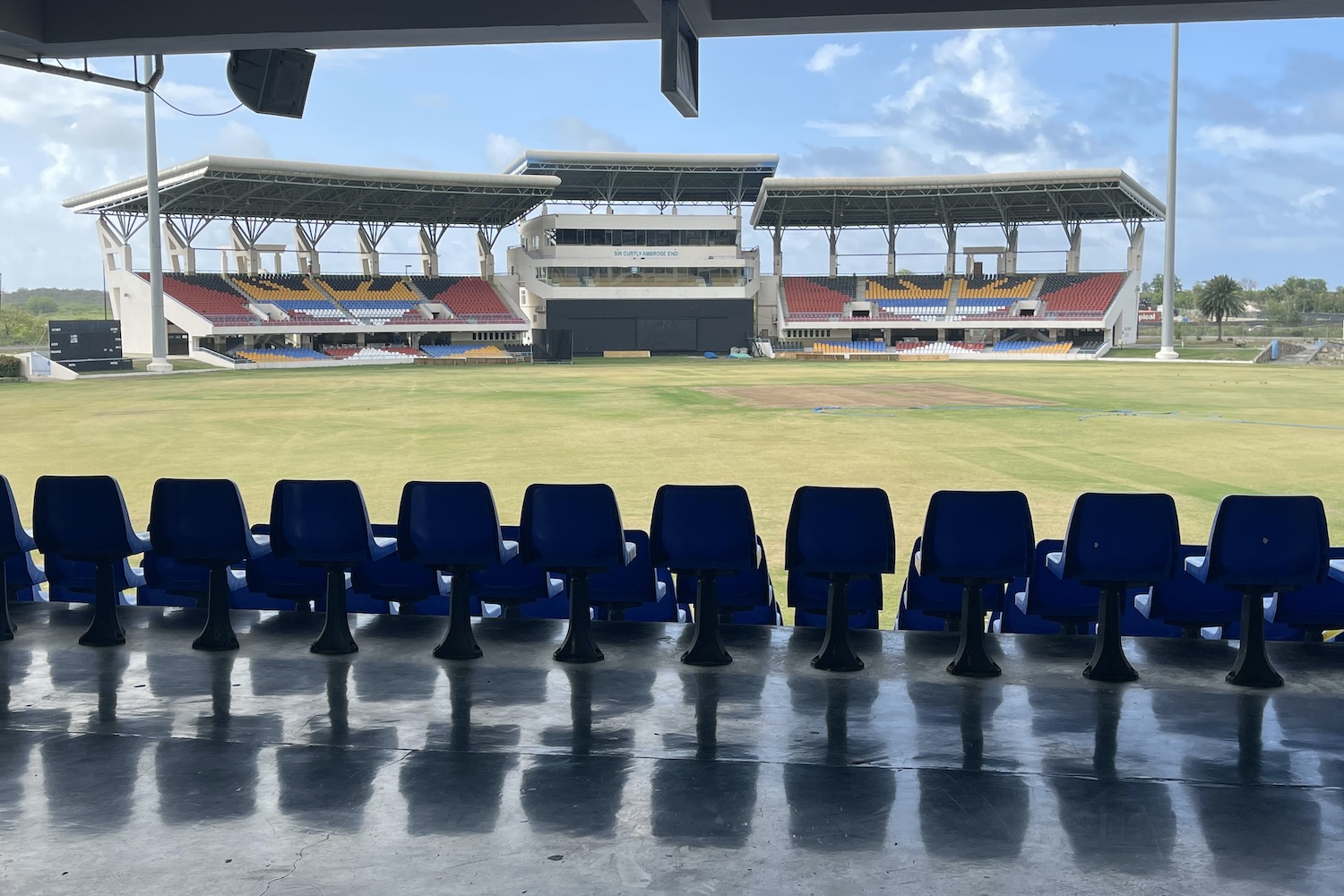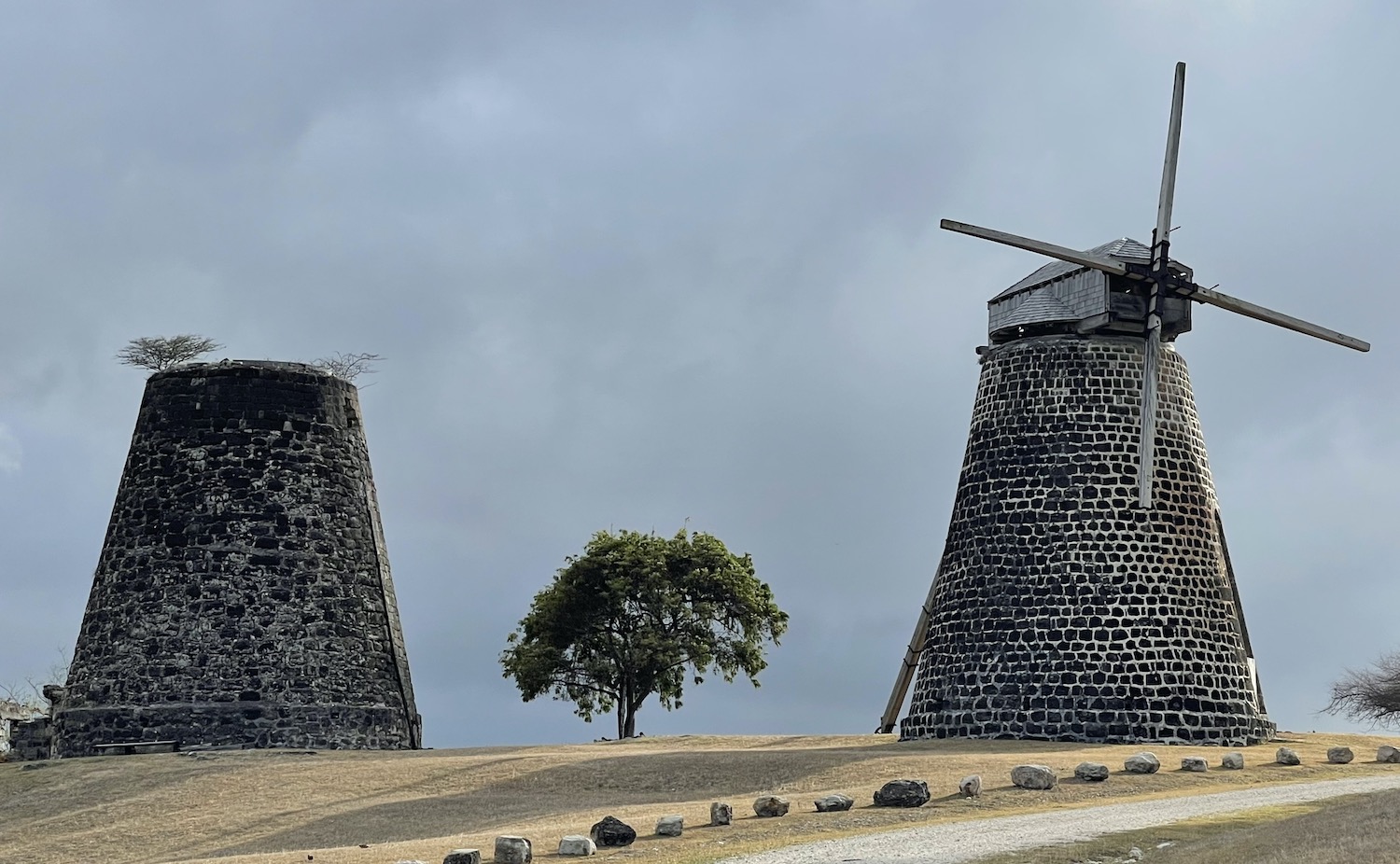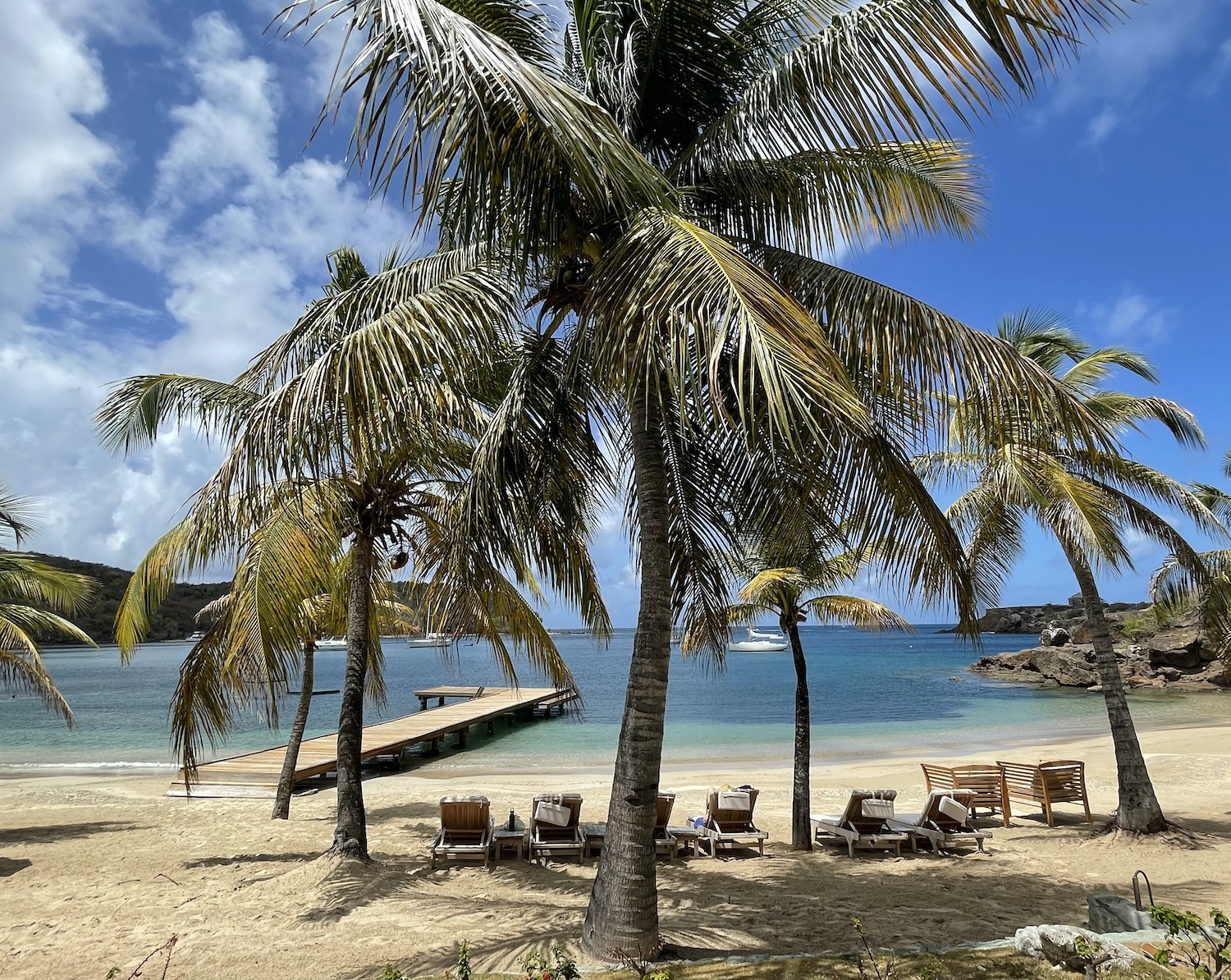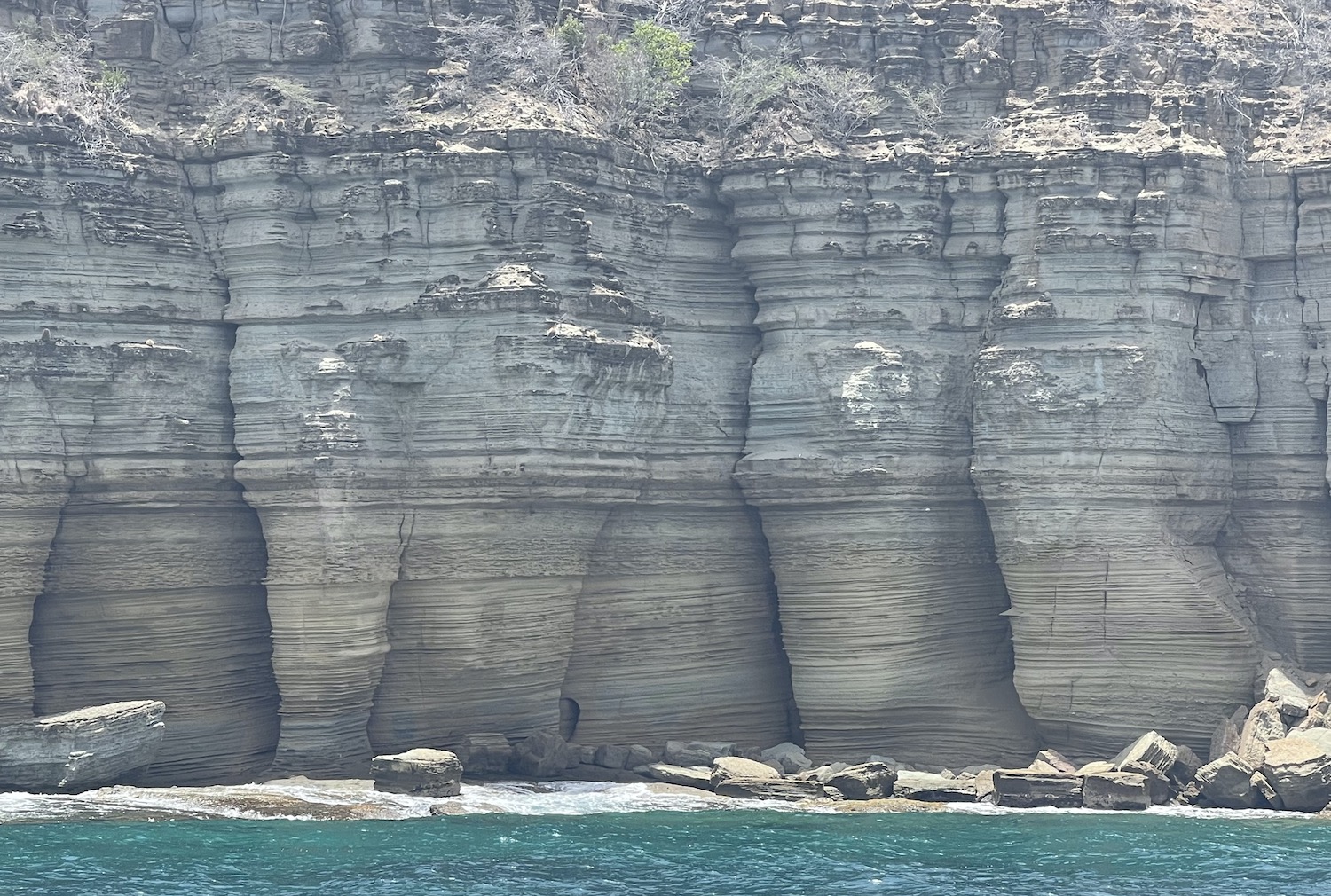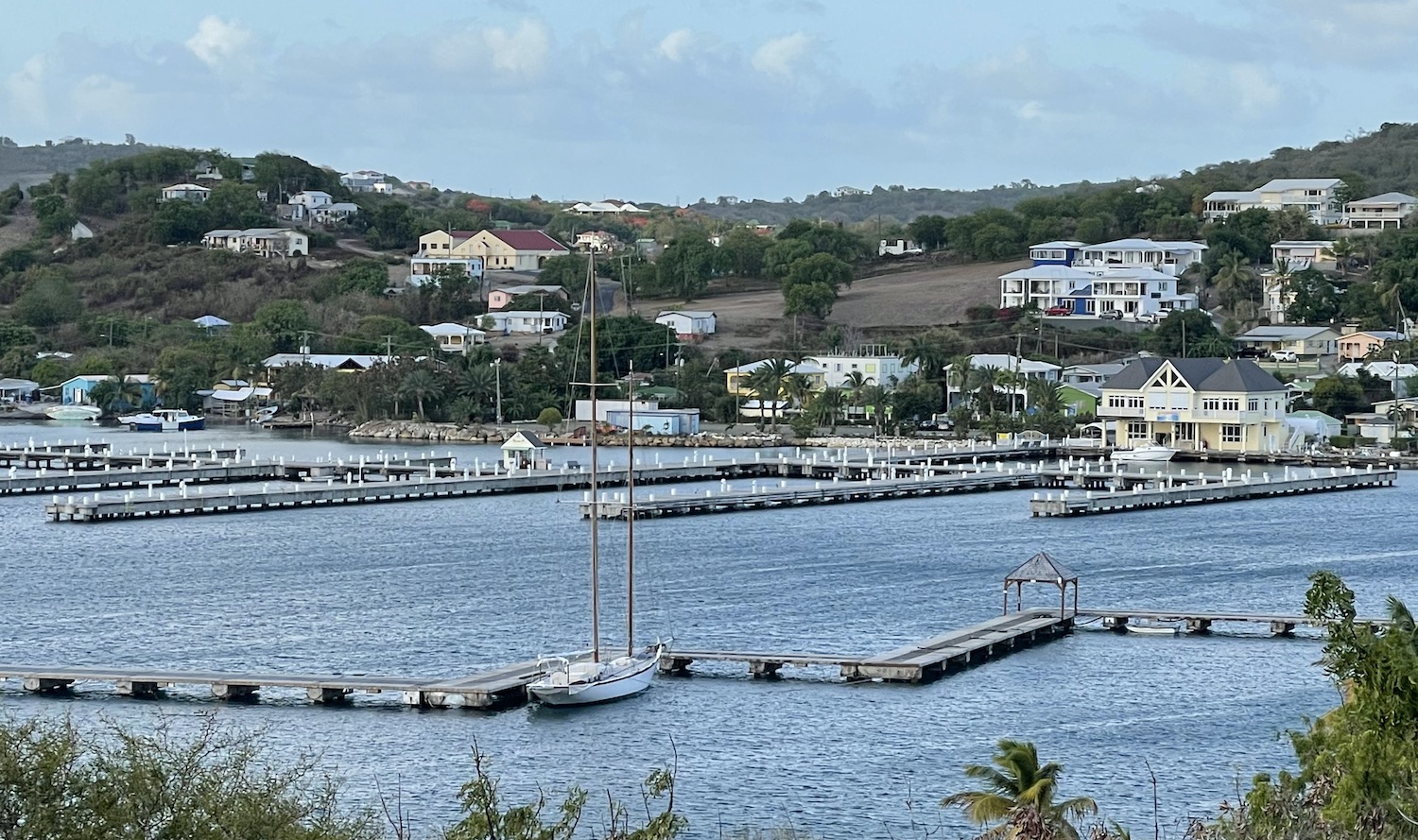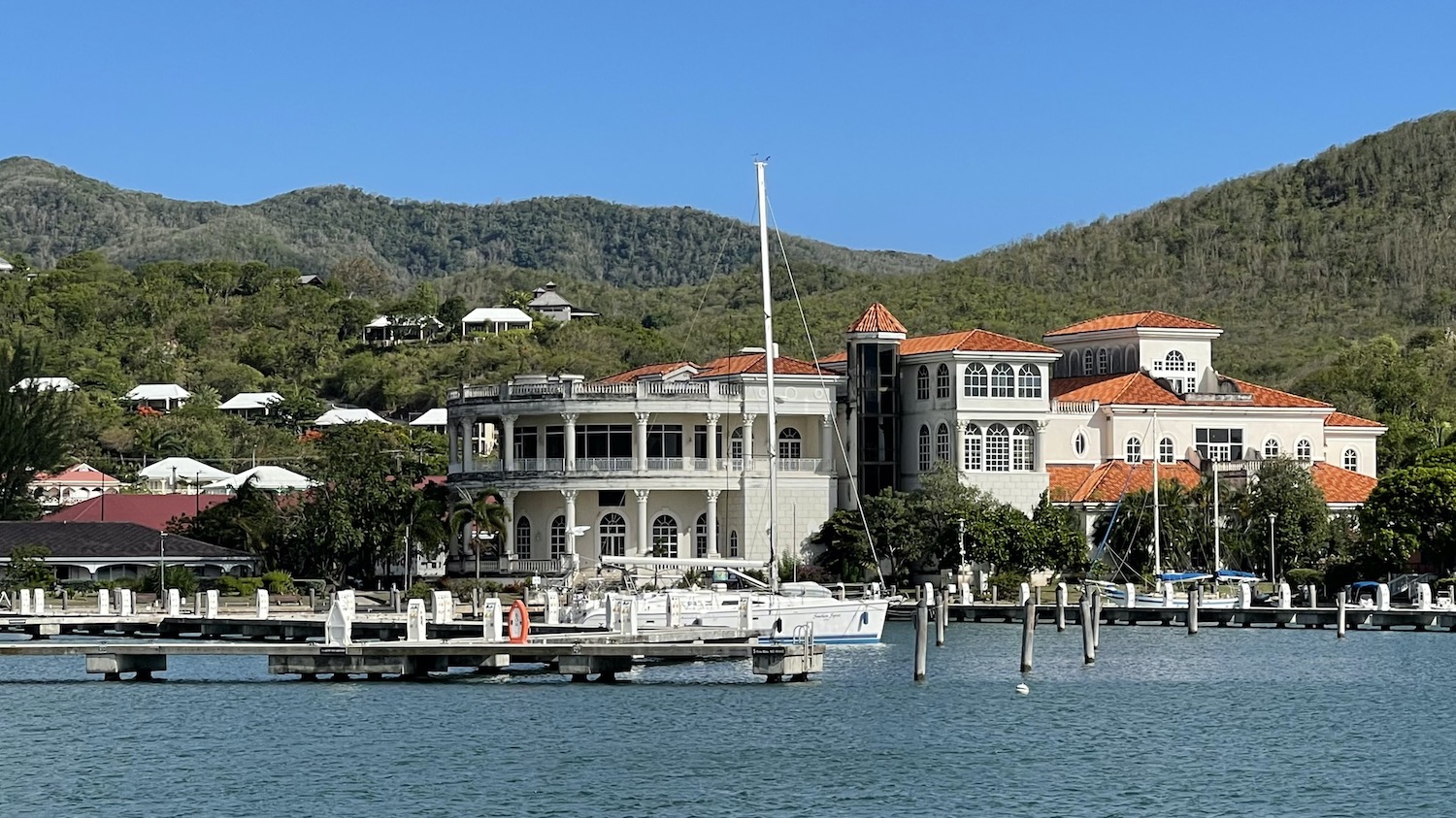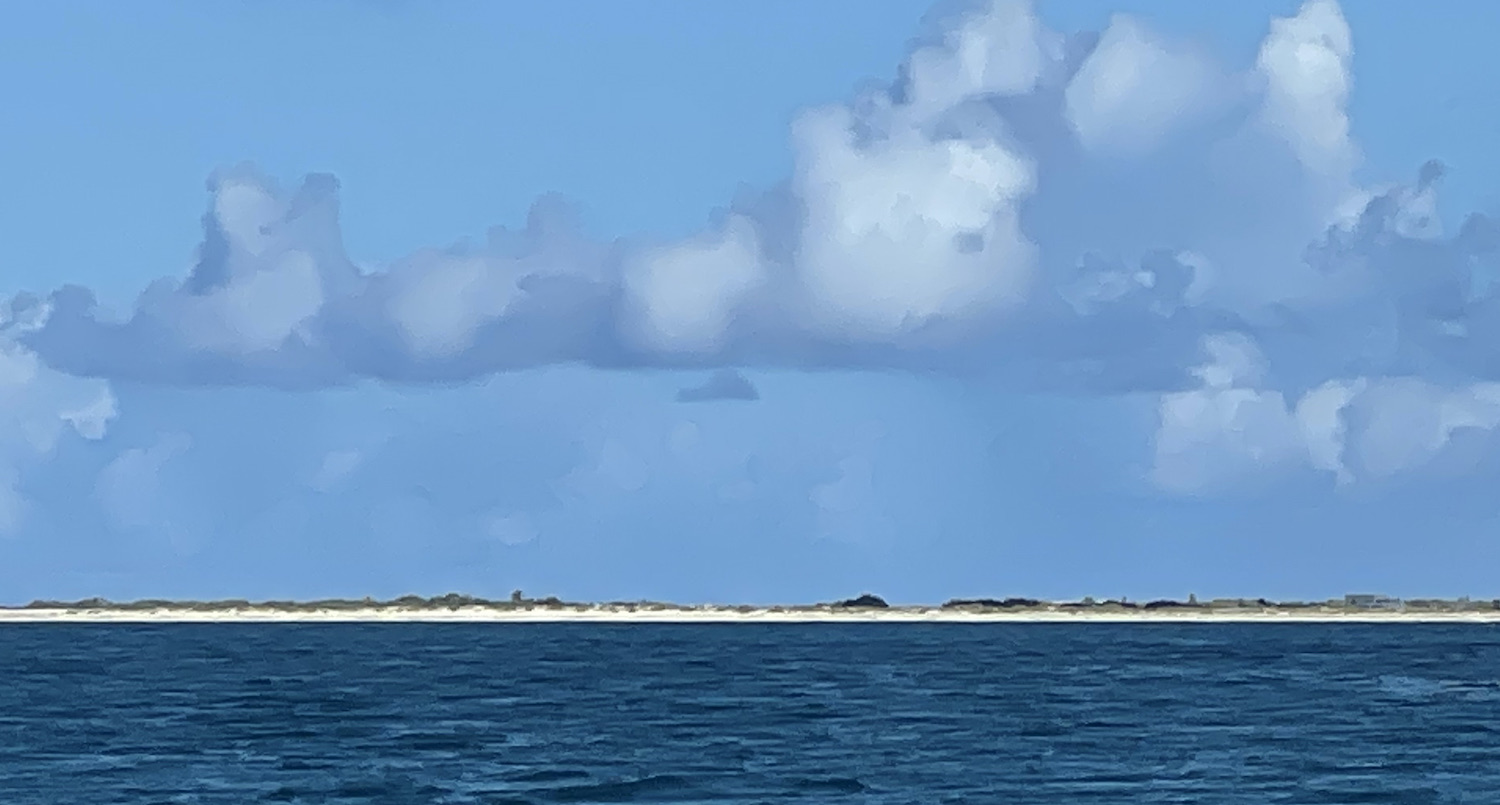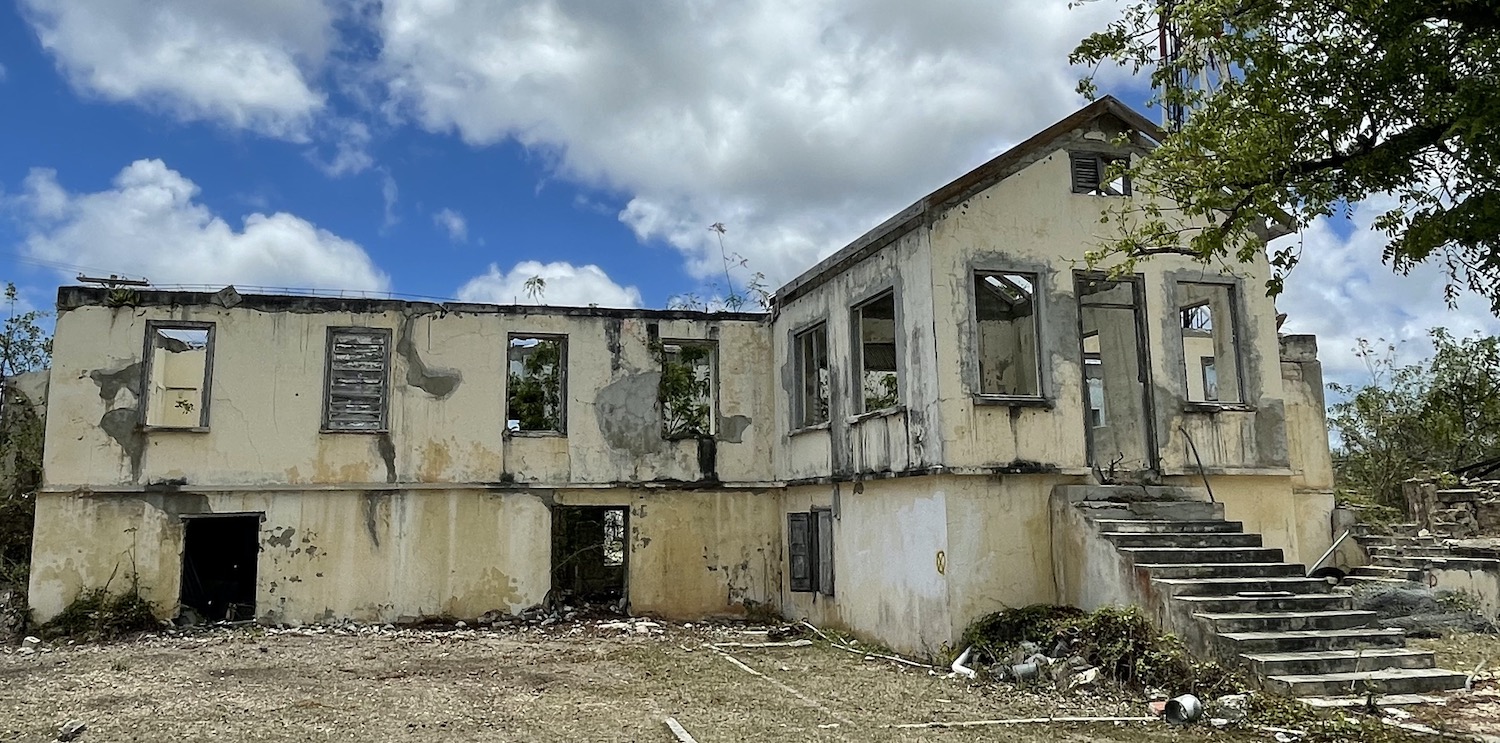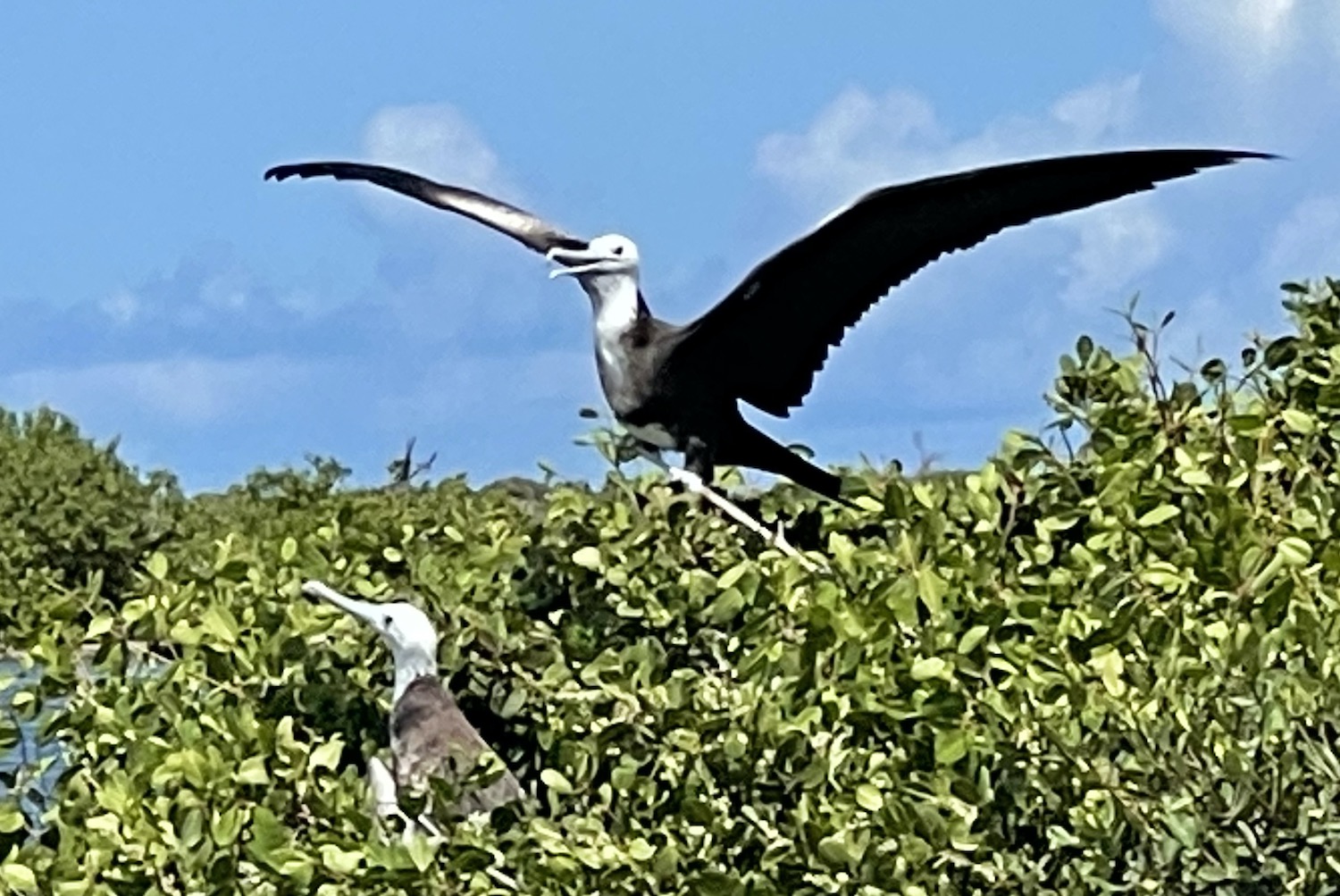The tourist brochures all claim that the double-island country of Antigua and Barbuda has 365 beaches, a different one for each day of the year. I don’t know about the veracity of that happy chance but Google Maps helpfully subtitles Antigua a “tropical island with beach resorts” and the local car number plates proclaim it a “land of sea and sun” and you can’t say fairer than that. It is also a world centre for sailing, with ample opportunities to take RYA courses, charter yachts with or without crew, and attend the Caribbean’s largest regatta at the end of April every year. Throw in aquamarine seas, sky-blue horizons, a low key vibe mixed with a beautifully preserved colonial heritage, and you have the ingredients for really rather a nice if not terribly adventurous time.

You can easily see Antigua from Barbuda, 60 kilometres away. They are both in the Lesser Antilles, which form the eastern boundary of the Caribbean Sea where it meets the Atlantic Ocean, an arc of small volcanic islands along the outer cliff of the Caribbean Plate discovered by Columbus on his second voyage in 1493. And they are in the Leeward Islands, the north half of the Lesser Antilles chain that runs from the Virgin Islands to Montserrat and which were united as an English Colony from 1671 to 1958 (with a small break for administrative reasons between 1816 and 1833). Antigua and Barbuda did not achieve independence until as late as 1 November 1981.
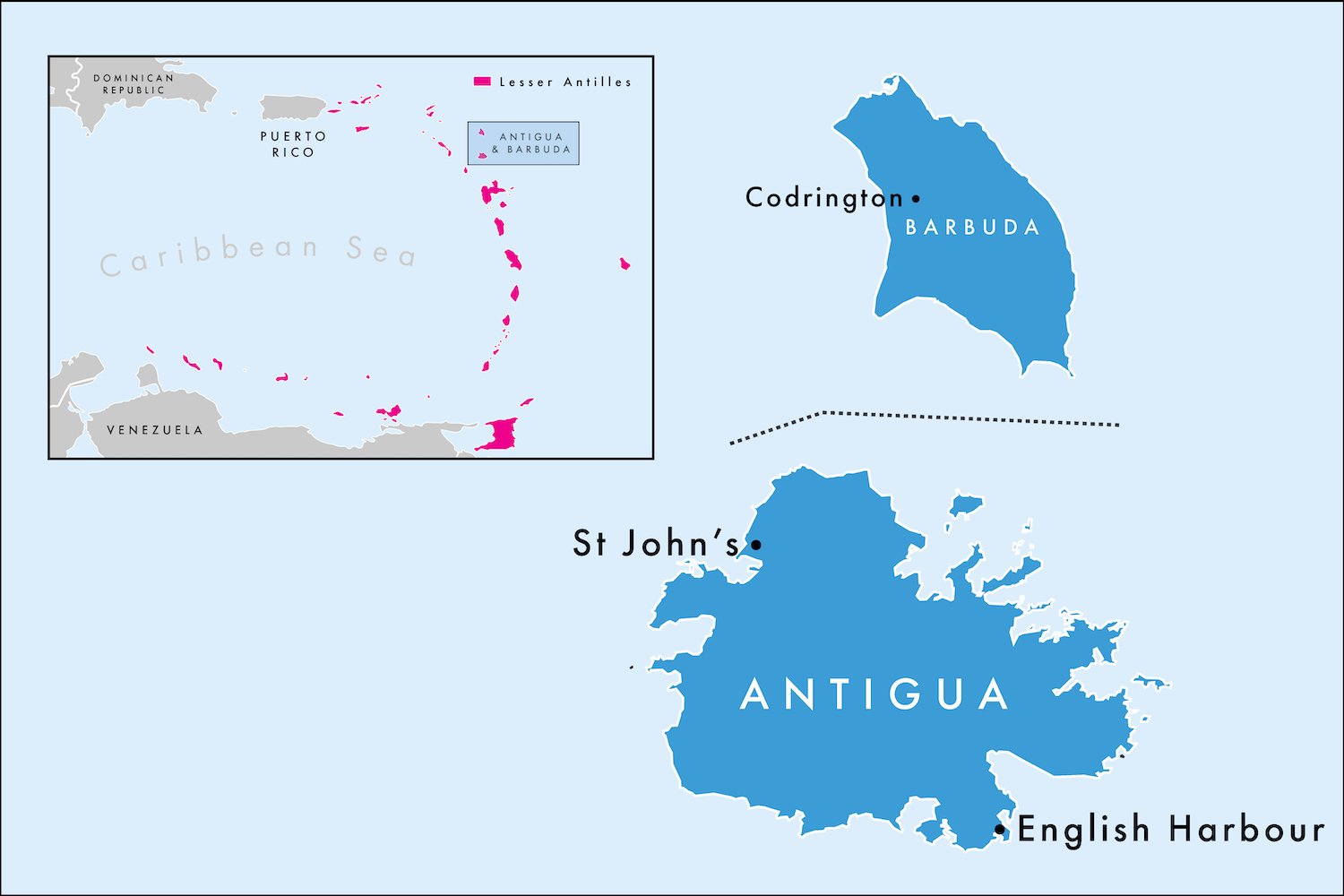
European colonialists had failed to occupy Antigua or Barbuda because of the indigenous Caribs’ strong defences until the English finally succeeded in 1632, after which Barbuda was leased to the Codrington family to transport and even farm slaves to work on the ginger, indigo, sugarcane and tobacco plantations established on Antigua. That is the ugly side of paradise and it cannot be forgotten.
The emancipation of slavery in 1834 is celebrated every year in the ten day Antigua Carnival which runs from the end of July to the first Tuesday in August. This is a festival of colourful costumes and beauty pageants, as well as calypso and soca artists and steel bands.
Prices are everywhere quoted in both US dollars and Eastern Caribbean Dollars, XCD, shared by all eight members of the Organisation of Eastern Caribbean States (Anguilla, Saint Kitts and Nevis, Antigua and Barbuda, Montserrat, Dominica, Saint Lucia, Saint Vincent and the Grenadines, and Grenada). The notes all have a picture of an extremely young Queen Elizabeth II. There is one ATM at the entrance to Nelson’s Dockyard in English Harbour; all the others are in St John’s. Scotiabank is the one most likely to work with international cards.
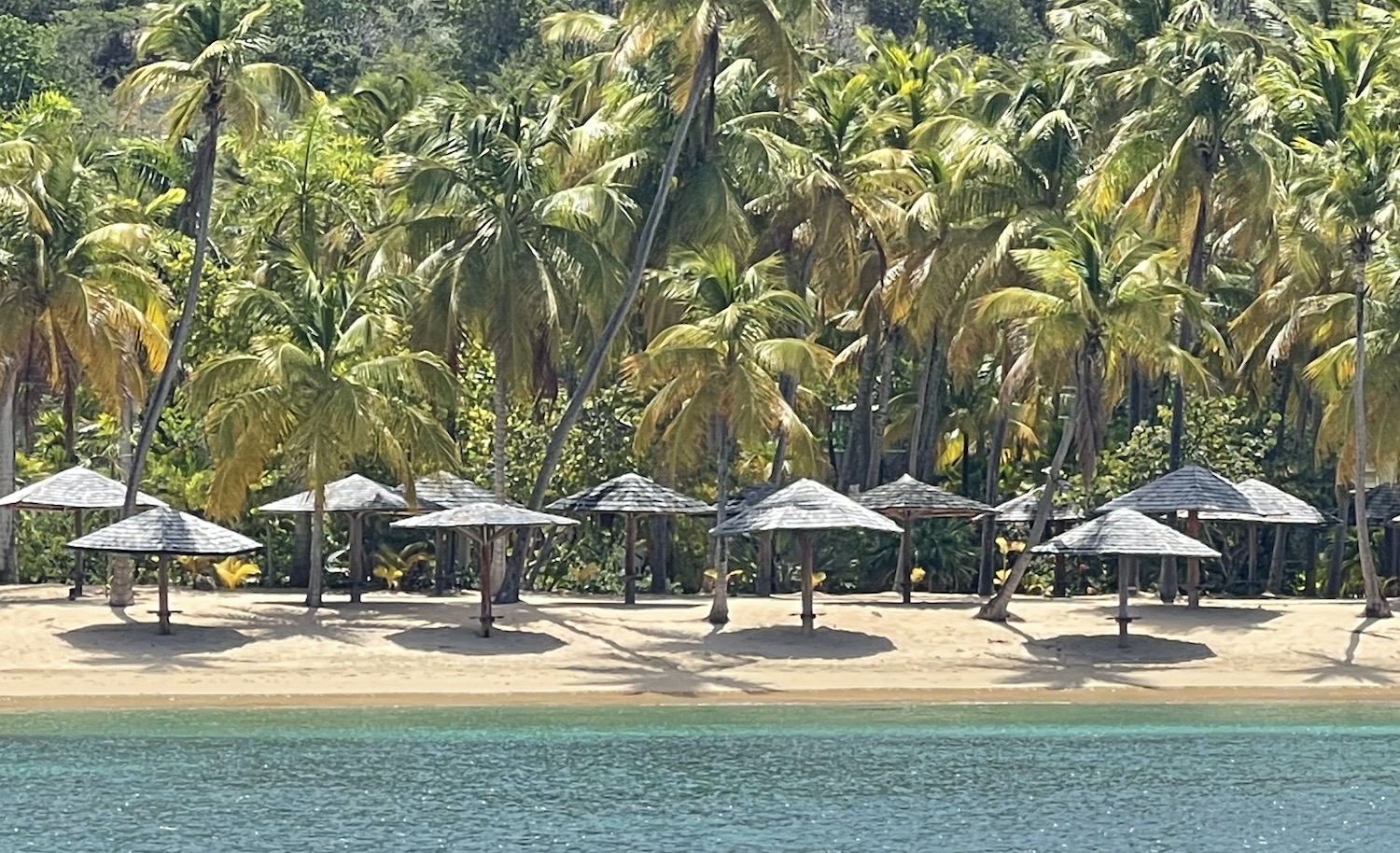
High season is in the winter because the hurricane season runs officially from 1 June to 1 November (though hurricanes are in fact most likely between August and October). In the summer it can be a little humid but there are still bright skies with mottled clouds that bring occasional showers lasting no more than three or four minutes. We found ourselves here in the coronavirus summer of 2021 when it was one of the very few beach destinations that did not demand lengthy quarantine but also had high vaccination rates and few local cases. Significant numbers of British and Americans had the same idea otherwise the island is apparently usually deserted at this time of year.
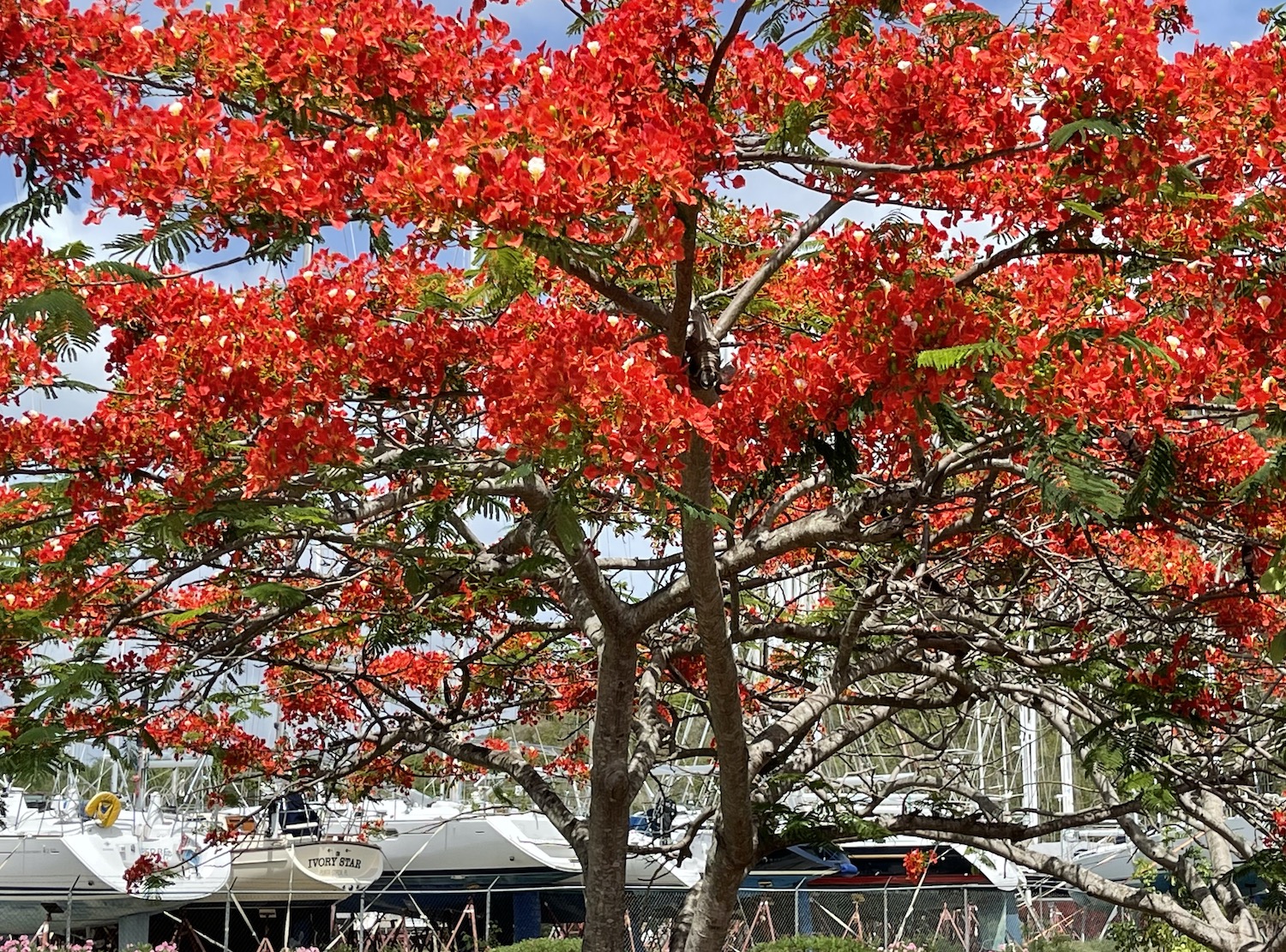
As the new adage goes, Covid has sped up processes that might otherwise have taken years to play out and I would not be at all surprised if Antigua and Barbuda – and other Caribbean countries – now start to market as year-round destinations. After all, the ubiquitous rum punch sugary taste and sweet dope smell are the same in all twelve months of the calendar, and the spectacular flames of flamboyant trees burn brightest in the summer.
Antigua
Antigua, less than 30km either east-west or north-south, means “ancient” in Spanish, after an icon in Seville Cathedral. It is called Wadadli, “our own”, by the indigenous population; that is also the name of the local beer.
This is a great place to get your sailing qualifications. There are two schools that can certify Royal Yachting Association courses: Ondeck, with whom we did our Day Skipper, at English Harbour; and Second Star at Jolly Harbour.

There are a host of places to charter yachts: Sunsail is right in Nelson’s Dockyard at English Harbour, there are dozens of local boutiques, and individual boats are advertised through the main websites, including Click & Boat, Nautal and Zizoo.
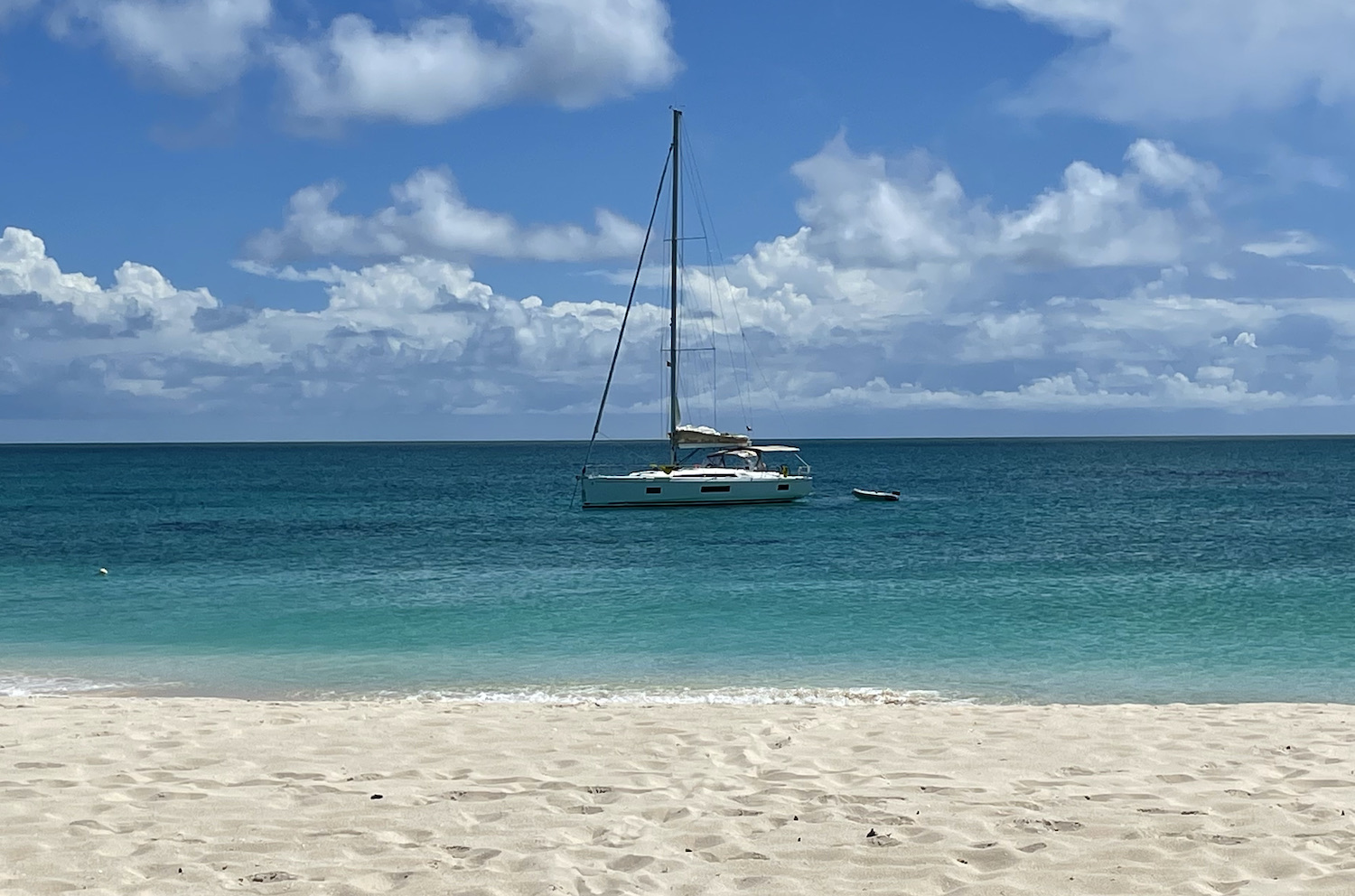
There is also a bit of diving, with good visibility and warm water guaranteed. The north is shallow and sandy but down south there are some rock formations and some coral gardens that attract loads of sharks. The best is Cades Reef off the south-west corner. In any case the surface intervals and lunches on remote beaches are alone worth the effort, and you can reach them through several dive centres along the coast. I can recommend Shaun at Soul Immersions in English Harbour.
To get around on land, the car hire shop of choice is Drive-A-Matic near the airport. Wherever you are, they will deliver and collect, which is useful if you are changing locations. The main roads are good, though as soon as you turn off gigantic pot holes are commonplace and tarmac can quickly dribble into muddy or sandy tracks; all part of the fun.
St John’s & the North
The airport is in the north-east of the country and it is only a quarter of an hour to the capital, St John’s, in the north-west. St John’s is set in a perfect location – a scooped bay of deep blue sea – but it is a characterless and charmless place, cramped with traffic, which houses about a quarter of the 80,000 people who live in Antigua.

The ferries to Barbuda (“from A to B by sea”, geddit?) and to Montserrat (suspended during the pandemic) go from the front. There is a deep harbour that takes cruise ships, which had just resumed a skeleton service when we arrived. Their passengers are directed towards the spree of duty free shops and handful of small rundown casinos nearby. Heritage Quay is particularly low grade, while Redcliffe Quay on the site of the old slave market is slightly better.
Beyond these plastic places is a more authentic local life that kicks in with blaring reggae around the pastel green public market complex. Right here is the hideous statue of Sir Vere Cornwall Bird, the seven feet-tall founder of the local Labour Party and the first prime minister of Antigua and Barbuda. He ruled from 1981 to 1994 when as luck would have it he was succeeded by his son Lester for another decade. Allegations of corruption and cronyism led the island to be known at that time as the Aviary.
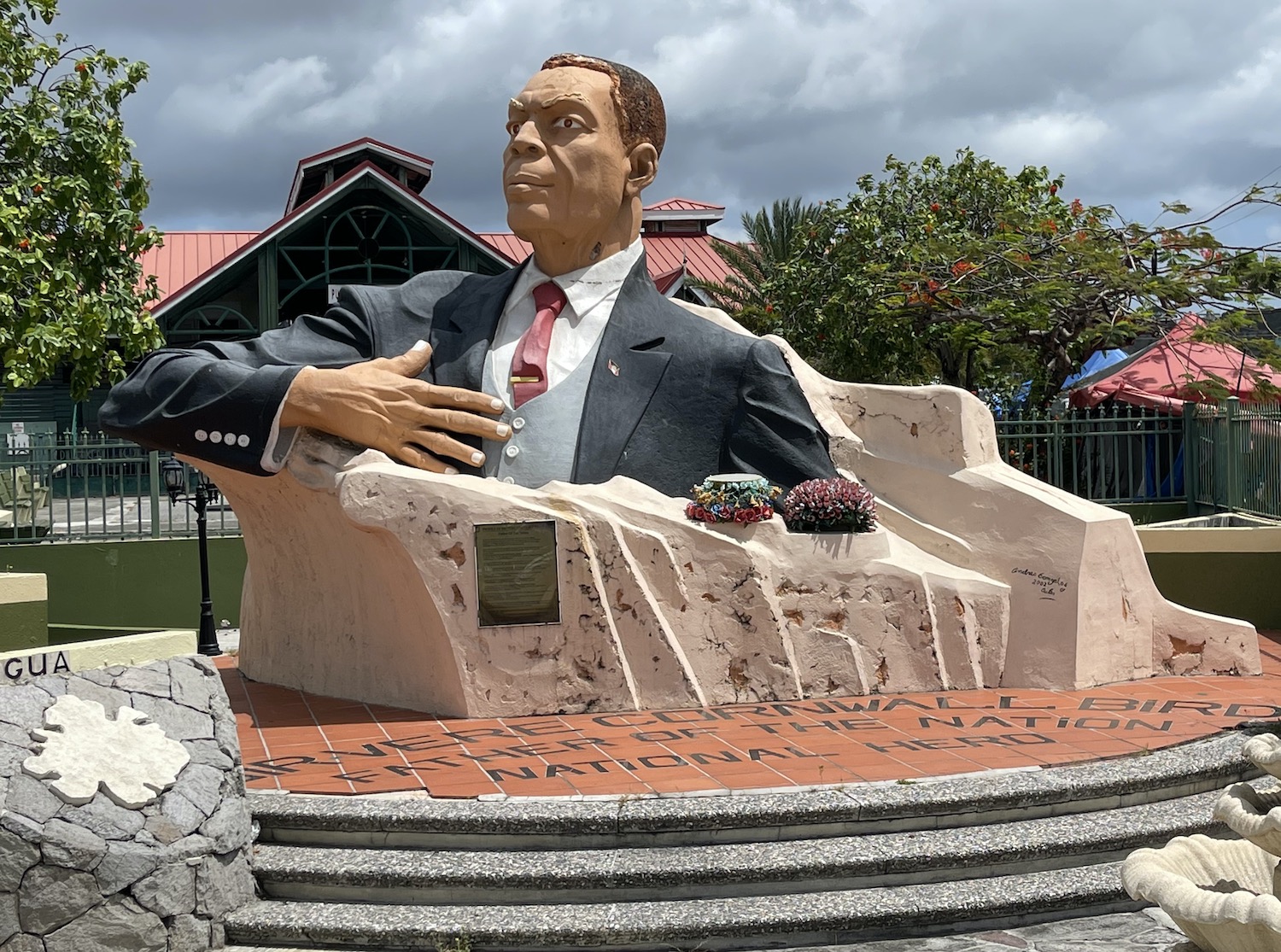
Overlooking the front from up the hill is St John’s Cathedral. Built in 1845, it is in urgent need of renovation. Few visitors come to St John’s for a night out, but if you do then head for Hemingway’s Caribbean Café or Papa Zouk.
Fort James, built in 1739, guards the eastern entrance to the harbour. It is a short drive away, near the eponymous beach, which is lovely but usually swamped by cruise shippers. Fort Barrington, from 1779 and the only citadel in Antigua to have seen military action, guards the western approach. It is reached from Five Islands Peninsula, which is full of all-inclusives and has the country’s sole clothing-optional beach.
Just north of St John’s, behind McKinnon’s Salt Pond, is where beach life begins. Runaway Bay beach is tranquil and empty, while adjoining Dickenson Bay beach is the country’s busiest. Although it is packed with middle market resorts and all-inclusives, notably a gigantic Sandals, at the south end is the very pleasant Siboney Beach Club which has a good restaurant right by the British red telephone box on the sand that is an Instagram star. It is between Buccaneer Beach Club and Ana’s On The Beach, both of which have good food too.
Obviously cricket has a central place in Antiguan cultural as well as sporting life, and the island has produced many fine players including West Indian bowlers Curtly Ambrose and Andy Roberts. But it is the great batsman Viv Richards that is the country’s proudest son, and the national stadium is named after him. Built to the east of the airport for the 2007 World Cup, it must create an atmosphere that belies its 10,000 official capacity; on non-match days it is easy to just wander around, outside and in.
There are two other spots out east that are marketed assertively to visitors: the Great House and windmill of Betty’s Hope Sugar Plantation, and the Devil’s Bridge rock arch blowhole, which is definitely not worth the trip to the east coast.
English Harbour & the South
Antigua is blessed with an indented coastline that creates beautiful sheltered havens all around its 90km circumference. The most acclaimed are in the south where the cute inlet at English Harbour abuts the huge bay of Falmouth Harbour, both of which are empty of boats all summer but are busy all winter and together host the vast and acclaimed Antigua Sailing Week each spring.
Between the two is the little village of St Paul, the best base from which to explore this half of the island. There are picture-perfect pastel-painted clapboard houses with chickens, goats and mongoose roaming wild as well as hotels and restaurants used to servicing the billionaire owners of superyachts during Sailing Week. There is just the one supermarket and several restaurant shacks with an island vibe, Bob Marley on shuffle, and free-flowing rum punch. My favourite is Colibri Bistro. There are two restaurants in front of the Antigua Yacht Club Marina – Club House for sushi and steak and Bar Bs for casual brunch and surly staff – and a couple of bars on the water too. Some places were fully booked even in this Covid summer, so make your reservations early.
During the eighteenth century, the British Royal Navy Caribbean Fleet was based at English Harbour, for large periods under the command of Admiral Horatio Nelson, who lived here between 1784 and 1887. On the west bank, the first dockyard, with capstan for careening ships, was built in 1728. Georgian-style storehouses, officers’ quarters, masthouses and other buildings were added throughout the century until it was finally abandoned in 1889, falling into decay.
Nelson’s Dockyard has been sumptuously restored, with its cobbled streets and cannons conjuring an antique atmosphere that has earned UNESCO status. It is one of the most lauded heritage sites in the Caribbean. Apart from several T-shirt sellers, within its bounds are Admiral’s Inn and its Pillars restaurant, and Copper & Lumber Store Historic Inn and its Main Brace restaurant. This is also a working marina that in the winter takes up to thirty superyachts as well as sailing boats crammed onto its pontoons. At the end of the south-west promontory where English Harbour snakes out to sea are the remains of Fort Berkeley.
On the east bank is Gunpowder House & Suites (owned by Admiral’s Inn and reached either by a little boat across the 100m stretch of water or by a short walk around the coast). Its Boom restaurant by the pool has a good view back to Nelson’s Dockyard. You can get an even better view from behind here, up the road up to Hospital Hill on the way to Antigua Slipway boatyard and chandlery, where you will also find Incanto Italian and La Brasserie French restaurants.
Further round is Galleon Beach, perfectly manicured on a spectacular location, especially at the north end where the Inn at English Harbour has a lovely restaurant with tables on the lawn and a stunning perspective on the entrance to the sea.
From the beach you can scramble over boulders to get to the Pillars of Hercules unique rock formation at the entrance to English Harbour on the east side, though by far the best view is of course back from the sea.
Also from the beach you can hike up the hill past wild cacti to Shirley Heights Lookout (after Governor Sir Thomas Shirley). Originally a military watchtower, this is now a restaurant that hosts one of the most magical events on the whole island. From 5pm on Sundays, there is an enormous barbecue, a reggae steel band, and expansive views that stretch all the way to Montserrat and Guadeloupe as the sun goes down. You must go, but to do so you must book as it gets rammed with locals and visitors alike.
On the other side of St Paul is Falmouth Harbour, which can take as many as a hundred superyachts at its pontoons and mooring buoys, which of course in the summer lay bare. On it is Pigeon Beach, one of the very best in Antigua. Obviously, there are palm trees and fine sand, but there is also a chilled shack at one end (Bumpkins) and fine French dining at the other (Catherine’s Café).
In St Paul you can hire an e-bike by downloading the BestoEPV app to get electric-assisted pedal-power to head out to the remote east. You will pass Standfast Point, Eric Clapton’s sprawling winter retreat. He is a popular figure in Antigua – his (far better) acoustic version of Layla is a fixture in many waterfront bars – probably because he also has here the Crossroads Centre for drug rehabilitation, and despite his current role as a leading Covid conspiracy theorist. After 20km of empty roads, mostly by the coast, past plenty of land plots for sale, you will come to remote Half Moon Bay, a wild and wildly beautiful beach. The curve of sand is ringed by sargassum seaweed, which is increasingly common in the Caribbean, and in the centre of the crescent is the magnificent Beach Bum Bar & Grill, the place to hire loungers, grab a lobster salad and chill with a pina colada.
West of Falmouth Harbour are lots of short hiking trails. The most popular is the route from Great George Fort on Monks Hill down to gorgeous and deserted Rendezvous Bay beach and on to Wallings Dam and Signal Hill.
Just north of here is the much touted but rather disappointing Fig Tree Drive. This is an 8km stretch of road in the hills flanked by mango and banana trees (known locally as figs). There are occasional fruit sellers at stalls by the road side, some offering the local black pineapple (which is sadly black in name only).
Fig Tree Drive turns into the coast road that takes you west to Turners, Darkwood and Ffryes beaches dotted with a series of fabulous beach restaurants as well as small shacks: Orrie’s, Rum Bus, OJs, Jackie O’s, Darkwood, Dennis’s and at the end Sheer Rocks, probably the best food on the island with a seven course tasting menu and accompanying wine flight. Obviously, there are high end villas and middling resorts all around. And it’s not hard to rent jet skis, hobie cats and SUPs.
Further round on the south-west coast is Jolly Harbour. Too shallow for superyachts, this is a busy little marina set in a beautifully secluded inlet where villas have their own boat pontoons. There are a series of shops and bars at the front, including Crow’s Nest, Petal’s Café and West Point. But the whole place has been in decline for two decades, as evidenced by the dominant structure in the area: right in the middle of the harbour, the Grand Princess Casino has long been closed and stands dilapidated.
However, Jolly Harbour does provide easy access to some cracking beaches. Bodog beach is close, with Sandra’s Bar & Grill at its centre. And just north are some very pretty isolated beaches, notably Hermitage and Morris.
Barbuda
As you approach Barbuda on the daily 90-minute little ferry, the tiny flat coral limestone island appears to be one long beach. Which is not far from the truth.
You can either pre-book a tour (Tuesdays and Thursdays) through the Barbuda Express ferry company, or at the small dock in the south it should be easy to grab a cab to skuttle round the sites with a driver to tell you what’s what. There are not many sites, and those there are, are easy to find. There are not many tourists either (a total of eight the day we came). But we were here on the last day of the festival public holiday (though Carnival was cancelled for Covid) so there were no taxis about. We still found it easy to hitch a lift into the only village, Codrington, with a population of about 100 on the west coast, where we asked around and among the hammered locals we found a willing recruit.
Barbuda is criminally ignored and under-developed. The more so since 6 September 2017, when Category 5 Hurricane Irma destroyed 90% of the buildings and the entire population of 1,500 was evacuated to Antigua. All taxi drivers and bartenders have harrowing tales to tell of saving themselves and their families that night. Although most people have subsequently returned and a couple of places to stay have re-opened (Barbuda Belle and Barbuda Cottages), many buildings are still to be repaired (including the oldest hotel, Coco Point Lodge), the airport is still closed, and the damage to the land is clear to see.
Irma did not damage Highland House (known locally as Willybob), but the eighteenth century Codrington family home in the eponymous village does lie in ruins. It is worth a look to understand its grandeur and to see the Dividing Wall that separated the wealthy family from their slaves.
Barbudans are very proud of shallow Codrington Lagoon on the north west coast, now with a gaping hole out to sea thanks to Irma, This is home to 10,000 magnificent frigatebirds, which can live to 50 years, have a 2m wing span and can glide without flapping further than any other bird, enabling them to travel at speeds of up to 80kmph and as long as thirty days without landing. The males migrate to Key West, returning in August to inflate their red-throats to attract a white-throated mate.
Near here, Pink Sand Beach is understandably often ranked one of the best in the world.
On the north east coast, among giant cacti and roaming donkeys, is Two Foot Bay. You get the best views by scrambling through India Cave and climbing up the cliff.
Back down on the south coast, past the Martello Tower and the remains of the nineteenth century fort, is Princess Diana Beach. She stayed here several times at a hotel owned by Robert De Niro. That has been destroyed now, though rather surprisingly he does have a Nobu here, near Uncle Roddy’s.
In a fierce competition in these parts, Princess Diana Beach has a robust claim to be the very best beach of all, with white sand stretching far out to sea creating blue-green water all the way to the horizon. And Enoch’s Shack-a-Kai in the middle of it, where you can hire a sun lounger and get a BBQ lobster with a Carib beer, might just be my very favourite place on these beautiful islands.
